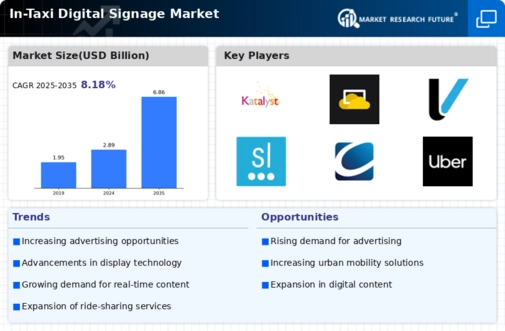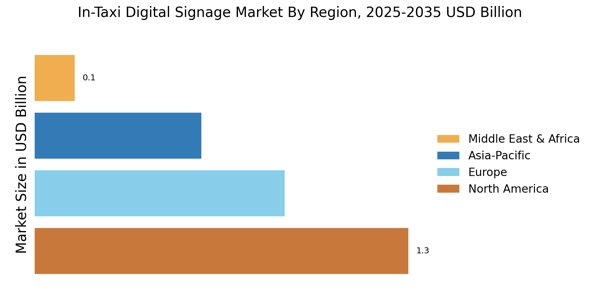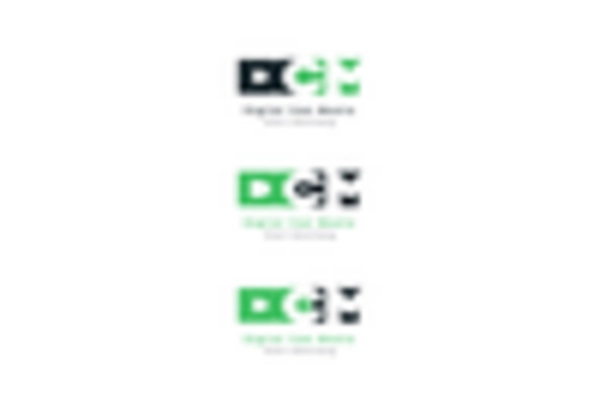Regulatory Support
Regulatory support is emerging as a key driver for the In-Taxi Digital Signage Market. Governments are increasingly recognizing the potential of digital signage to enhance public transportation systems and improve passenger experiences. Policies that promote the use of digital technologies in taxis can facilitate the growth of this market. For instance, regulations that allow for the installation of digital screens in taxis can create a more engaging environment for passengers while providing advertisers with a platform to reach their target audience. Furthermore, as cities aim to modernize their transportation infrastructure, the In-Taxi Digital Signage Market stands to benefit from favorable regulations that encourage innovation and investment in digital signage solutions.
Urbanization Trends
Urbanization trends are significantly influencing the In-Taxi Digital Signage Market. As more people migrate to urban areas, the demand for taxi services increases, leading to a larger audience for in-taxi advertisements. Data indicates that urban populations are expected to rise, with projections suggesting that by 2030, nearly 60% of the world's population will reside in cities. This demographic shift creates a fertile ground for the In-Taxi Digital Signage Market, as advertisers seek to reach a concentrated audience in high-traffic areas. The ability to deliver targeted advertising to urban commuters enhances the value proposition for advertisers, making in-taxi digital signage an attractive option for brands looking to maximize their reach.
Consumer Behavior Shifts
Shifts in consumer behavior are reshaping the In-Taxi Digital Signage Market. As consumers increasingly rely on digital platforms for information and entertainment, the demand for engaging content in taxis has risen. Research indicates that over 70% of consumers are more likely to remember advertisements displayed on digital screens compared to traditional media. This trend suggests that advertisers are recognizing the potential of in-taxi digital signage to capture attention during transit. Furthermore, the rise of mobile technology and social media integration allows for interactive advertising experiences, further enhancing consumer engagement. As these behavioral shifts continue, the In-Taxi Digital Signage Market is poised for growth, driven by the need for innovative advertising solutions.
Advertising Revenue Growth
The In-Taxi Digital Signage Market is benefiting from a notable increase in advertising revenue. As businesses seek more effective ways to reach consumers, in-taxi digital signage presents a unique opportunity to engage passengers during their journeys. Recent statistics show that the advertising revenue generated from digital signage is expected to reach over $30 billion by 2026. This growth is attributed to the ability of digital signage to deliver targeted and timely messages, which can significantly enhance brand visibility. Additionally, the flexibility of digital content allows for real-time updates and promotions, making it an appealing choice for advertisers. As the advertising landscape evolves, the In-Taxi Digital Signage Market is likely to capture a larger share of the overall advertising spend.
Technological Advancements
The In-Taxi Digital Signage Market is experiencing a surge in technological advancements, particularly in display technologies and content management systems. Innovations such as high-definition screens, interactive displays, and real-time data integration are enhancing the effectiveness of in-taxi advertising. According to recent data, the market for digital signage is projected to grow at a compound annual growth rate of approximately 8.5% over the next five years. This growth is driven by the increasing demand for dynamic content that can be updated instantly, allowing advertisers to tailor messages based on real-time factors such as location and time of day. As technology continues to evolve, the In-Taxi Digital Signage Market is likely to see further enhancements that improve viewer engagement and advertising effectiveness.


















Leave a Comment